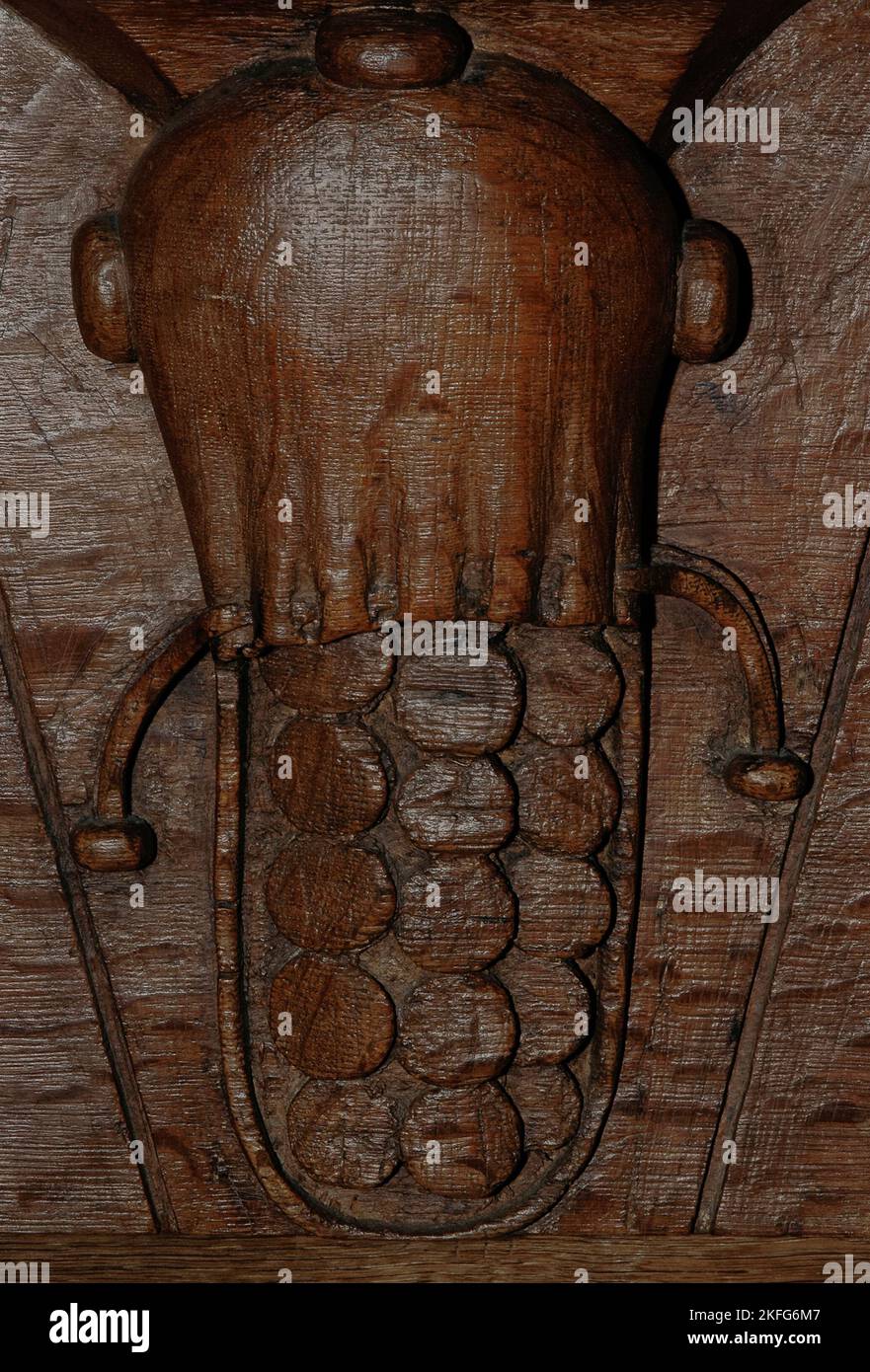Coins pour out of an inverted leather purse or drawstring money bag in a clear warning to the original Roman Catholic congregation of the Oude Kerk (Old Church) in Amsterdam, Netherlands, against extravagance, profligacy and waste. Late 15th century sculpted misericord beneath a tip-up choir stall seat.

Image details
Contributor:
Terence Kerr / Alamy Stock PhotoImage ID:
2KFG6M7File size:
18.1 MB (1.2 MB Compressed download)Releases:
Model - no | Property - noDo I need a release?Dimensions:
2071 x 3055 px | 17.5 x 25.9 cm | 6.9 x 10.2 inches | 300dpiDate taken:
30 August 2006Location:
Oude Kerk, Ouderkerksplein, Amsterdam, NetherlandsMore information:
This image could have imperfections as it’s either historical or reportage.
Amsterdam, North Holland, Netherlands: coins cascade from an upturned 15th century leather purse or drawstring money bag: a clear warning to the congregation of the city’s former Roman Catholic Oude Kerk (Old Church) against extravagance and profligacy. The carving is among misericords carved between 1480 and 1500 on the underside of folding choir stall seats that survived decades of religious turmoil and wilful damage to the building and its artistic treasures. They endured the Dutch Revolt against Spanish rule, the Protestant Reformation switch from Catholicism to Calvinism - and ugly incidents when the building was looted and defaced. The worst damage occurred in 1566, when an iconoclastic mob destroyed most of the church’s art and fittings. Some pre-Reformation stained glass was left unscathed, as were the choir misericords, which mostly illustrate old Dutch proverbs and sayings. The original misericords are now combined with a few examples by modern artists. The Oude Kerk, in Ouderkerksplein, is Amsterdam’s oldest building. It is now a museum of architecture and art, although it still hosts Protestant Sunday services. D0239.A2852